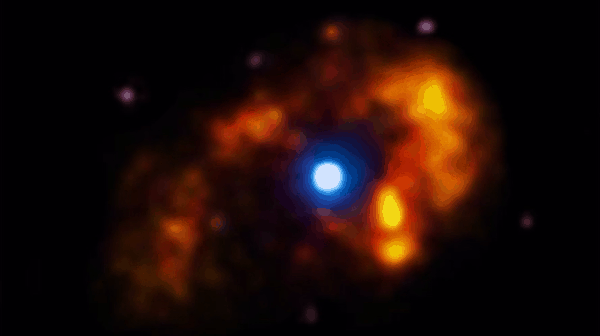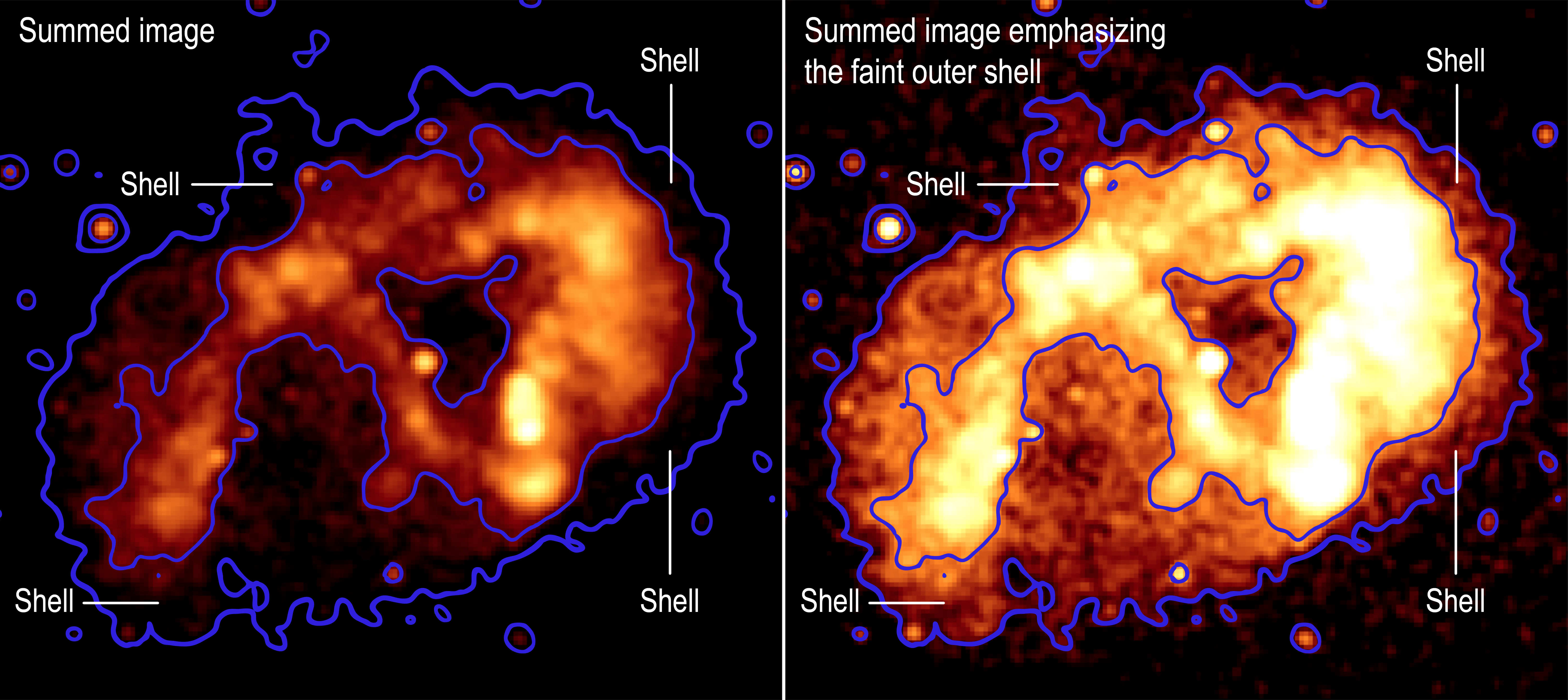Watch a 180-year-old star eruption unfold in new time-lapse movie (video)
More than 20 years of Chandra X-ray Observatory data reveals the evolution of a historic space explosion.

Using over two decades of data from NASA’s Chandra X-ray Observatory, astronomers have crafted a stunning new video of a stellar eruption that took place some 180 years ago.
The time-lapse video uses Chandra observations from 1999, 2003, 2009, 2014 and 2020 — along with data from ESA’s XMM-Newton spacecraft — and retraces the history of the stellar explosion known as Eta Carinae. This famous star system contains two massive stars. One of those stars is about 90 times more massive than the sun, scientists say, while the other is about 30 times more massive than the sun.
The massive explosion, dubbed the "Great Eruption, came from Eta Carinae. It is believed to be the result of a merger between two stars that originally belonged to a triple star system. The aftermath of the collision was witnessed on Earth in the mid-19th century, and the new video shows how the stellar eruption has since continued to rapidly expand into space at speeds reaching up to 4.5 million miles per hour , according to a statement from NASA.
Related: Eta Carinae's epic supernova explosion comes to life in new visualization
"During this event, Eta Carinae ejected between 10 and 45 times the mass of the sun,” NASA officials said in the statement. "This material became a dense pair of spherical clouds of gas, now called the Homunculus Nebula, on opposite sides of the two stars."
The Homunculus Nebula is the bright blue cloud at the center of the image, fueled by high-energy X-rays produced by the two massive stars, which are too close to be observed individually. They are surrounded by a bright orange ring of X-ray emissions that appear to grow and expand rapidly over time.
"The new movie of Chandra, plus a deep, summed image generated by adding the data together, reveal important hints about Eta Carinae’s volatile history," NASA officials said in the statement. "This includes the rapid expansion of the ring, and a previously-unknown faint shell of X-rays outside it."
Get the Space.com Newsletter
Breaking space news, the latest updates on rocket launches, skywatching events and more!

The faint X-ray shell is outlined in the image above, showing that it has a similar shape and orientation to the Homunculus nebula, which suggests both structures have a common origin, according to the statement.
Based on the motion of clumps of gas, astronomers believe the stellar material was blasted away from Eta Carinae sometime between the years 1200 and 1800 — well before the Great Eruption was observed in 1843. As the blast extended into space, it collided with interstellar material in its path. The collision then heated the material, creating the bright X-ray ring observed. However, the blast wave has now traveled beyond the ring, given the X-ray brightness of Eta Carinae has faded with time, scientists said.
Their findings on Eta Carinae’s expansion were published in a 2022 study in the Astrophysical Journal.
"We’ve interpreted this faint X-ray shell as the blast wave from the Great Eruption in the 1840s," Michael Corcoran at NASA’s Goddard Space Flight Center in Greenbelt, Maryland, who led the study, said in a statement from the Chandra X-ray Observatory. "It tells an important part of Eta Carinae’s backstory that we wouldn’t otherwise have known."
Join our Space Forums to keep talking space on the latest missions, night sky and more! And if you have a news tip, correction or comment, let us know at: community@space.com.

Samantha Mathewson joined Space.com as an intern in the summer of 2016. She received a B.A. in Journalism and Environmental Science at the University of New Haven, in Connecticut. Previously, her work has been published in Nature World News. When not writing or reading about science, Samantha enjoys traveling to new places and taking photos! You can follow her on Twitter @Sam_Ashley13.









